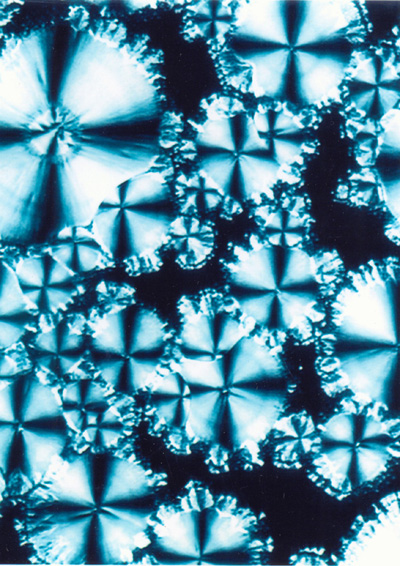Crystallization of Milk Fats
 |
This picture was taken with a high-resolution polarized light microscope. It is a crystallized fraction of the triacylglycerides (TAGs) found in natural milk fats. Crystallization is often used as a means of purification as TAGs with similar melting points enter into a crystal structure simultaneously. One can see here the disordered crystal bordering the more spherical crystals. This segregation results from the solution containing various TAGs, with non-complementary TAGs having different crystallizing symmetry. As the well-ordered, spherical crystals are larger than the disordered crystals, one can conclude that initial crystallization favours a high degree of symmetry and that there are many TAGs with similar melting points which crystallize prior to the other TAGs.
The crystallization of TAGs from a melt starts off as single lamellae, or long and flat crystal planes. The lamellae branch rapidly and form more complicated structures, thereby filling space in 3 dimensions to form a spherical structure called a spherulite. Bifringence results when the indices of refraction for light traveling through the crystal are different for light propagating in different directions - hence the orthogonal dark lines, known as Maltese crosses on each spherulite.
Dr. Suresh Narine and Kerry Lyn Humphry
University of Alberta - Dept. of Agricultural Food & Nutritional Science, Edmonton, Alberta
2nd Prize ( Open Category )
Questions or comments regarding these pages may be sent to / Les questions ou commentaires concernant ces pages peuvent être envoyées à
cap@uottawa.ca